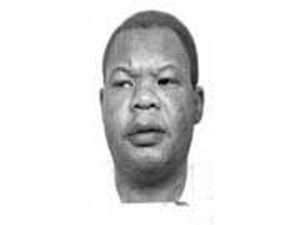Kelsey Patterson was executed by the State of Texas for a double murder
According to court documents Kelsey Patterson would go to the Oates Oil Company where he would fatally shoot 61 year old Louis Oates and would then fatally shoot 41 year old Dorothy Harris
Kelsey Patterson would be arrested, convicted and sentenced to death
Kelsey Patterson would be executed by lethal injection on May 18 2004
Kelsey Patterson Photos

Kelsey Patterson FAQ
When Was Kelsey Patterson Executed
Kelsey Patterson was executed on May 18 2004
Kelsey Patterson Case
Rejecting a state board’s unusual recommendation for a stay, Gov. Rick Perry allowed the execution Tuesday evening of death-row inmate Kelsey Patterson, a diagnosed paranoid schizophrenic.
The Texas Board of Pardons and Paroles had voted 5-1 Monday to recommend that Mr. Patterson’s sentence be commuted to life or that the governor grant a 120-day reprieve. Mr. Patterson’s attorneys had argued that he suffers from mental illness and should not be executed. Ninety minutes before the execution was to occur, Mr. Perry declined to intervene. Mr. Patterson was sentenced to death for the 1992 killings of Dorothy Harris and Louis Oates in Palestine.
In a prepared statement, Mr. Perry said he denied commutation or a stay because none of the courts that reviewed the case found any reason Mr. Patterson should not be executed.
Mr. Perry said one reason he denied clemency was because “the defendant is a very violent individual. Texas has no life without parole sentencing option, and no one can guarantee this defendant would never be freed to commit other crimes were his sentence commuted.”
As the warden leaned over him and asked if he had a final statement, Mr. Patterson responded, “Statement to what? Statement to what? I’m not guilty of the charge of capital murder.” Mr. Patterson continued to ramble, asking repeatedly for his rights. At one point, he said, “Go to hell.” And as he was saying, “Give me my life back,” the lethal drugs took effect. Mr. Patterson gasped several times and took a deep breath. Nine minutes later, at 6:20 p.m., he was pronounced dead.
J. Gary Hart, Mr. Patterson’s attorney, said he was outraged by the governor’s actions. “I’m disappointed, I’m angry.” Michele Smith, whose mother, Dorothy Harris, was killed by Mr. Patterson, sobbed to reporters after watching the execution. “I want to especially thank the governor for giving me a chance to start again and have an end to such a horrible time in my life,” she said. “I started the day off very pessimistic, but it ended as I prayed it would.”
Mr. Perry’s decision to reject the Pardons and Paroles Board’s recommendation – only the fourth such decision in the last six years – was greeted with dismay by death-penalty opponents and mental-health advocates and with approval by death-penalty supporters. “It’s a sad day for Texas,” said Genevieve Tarlton Hearon, executive director of Capacity for Justice, a nonprofit organization dedicated to those who suffer from mental illness. “I’m sick, I’m just crushed,” she said. “Because if clemency cannot occur for this individual, then the possibility for it for any Texan is dim.”
Dianne Clements of Justice for All, a criminal justice reform organization in Houston, said she was relieved by the decision and applauded the governor. “He did exactly the right thing,” she said. Ms. Clements said she was disturbed not by Mr. Perry’s decision, but by the board’s recommendation.
The U.S. Supreme Court prohibits executing the insane and the mentally retarded, but not the mentally ill. If an inmate understands why he has been sentenced to death and that he is facing execution, he is eligible for execution. Prosecutors argued that Mr. Patterson met both criteria. “I don’t think there’s a dispute about him being diagnosed as paranoid schizophrenic,” Anderson County District Attorney Doug Lowe said. “But that doesn’t mean a person isn’t accountable for what they do.”
Clemency had been sought on Mr. Patterson’s behalf not only by death-penalty opponents but also by 33 advocacy organizations for mental-health issues. Before his capital trial, Mr. Patterson had been ruled incompetent in two other nonfatal shooting cases – one in Dallas in 1980, the other in Palestine in 1983.
Mr. Patterson shot Mr. Oates, owner of an oil company, while he was standing on the company loading dock. When Ms. Harris, a secretary began screaming, Mr. Patterson shot her, too. Afterward, he returned home, undressed and was arrested while walking naked in front of his house. During his trial he talked frequently about being controlled by “remote control devices” and “implants.”
Mr. Patterson’s attorney, Mr. Hart, said public safety wasn’t an issue, because if his client’s sentence had been commuted to life, he would have been imprisoned at least 28 more years before eligibility for parole. “That would make him 78 years old,” he said. “Not only that, but the parole board’s in charge” – meaning authorities would need to vote to release Mr. Patterson. The message from Mr. Perry’s statement is: “That this is a mad dog, and we have to take him out and shoot him because it’s the only way to handle it,” Mr. Hart said.
Commutations are relatively rare in Texas, but the Board of Pardons and Paroles has recommended three this year. In March, Mr. Perry granted a commutation to life for Robert Smith after prosecutors and defense attorneys agreed he was mentally retarded. Another commutation recommendation came in January in the case of Joe Lee Guy, who was a lookout but did not kill anyone in a 1993 robbery and murder in Hale County. Mr. Perry has yet to rule on that recommendation. Mr. Guy does not have an execution date.
http://www.dallasnews.com/sharedcontent/dws/dn/latestnews/stories/051904texexecute.1d51bf076.html







